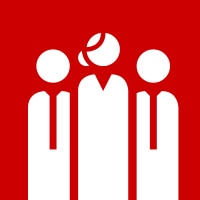March 24, 2020
6 Best Practices for Effective Remote Team Communication
With more organizations enforcing remote work, team messaging is critical tokeeping distributed teams communicating and collaborating effectively

With more organizations enforcing remote work, team messaging is critical tokeeping distributed teams communicating and collaborating effectively. Theproblem is, communicating through text is vastly different than communicatingin person. Ideas can be misunderstood, expressions can be misconstrued, andwalls of text can get glanced over. Team messaging has an entirely differentform of etiquette, and by understanding the rules, you'll be able to take yourteam's collaborative spirit to the next level.
Here are our six best practices to effectively communicateusing team messaging:
1. Consider your audience.
Texting is by nature a quick and casual form ofcommunication, with shorthand, symbols, and slang (i.e., emojis, gifs, memes,etc.) for just about everything. When participating in business chat, keep inmind whom you are conversing with, what you are trying to convey, and the mostappropriate way to express your message. Maybe you know what IMO means, butdoes your 60-year-old boss? And will he or she know you're only expressing yourpersonal opinion and not a fact?
2. Organize your team messaging tools.
Set up teams, rooms, or channels that are clearly andspecifically named, and include just those working in a particular department(i.e., development, marketing, sales, etc.), with a certain client, or on aparticular project to help ensure that you're speaking to the right people andyour messages make sense. You can even organize your less-formal conversationsby setting up a virtual break room team or channel, where people can drop into chat and bond with their coworkers.
3. Keep messages brief and concise.
Chat is, by definition, brief, so try to avoid sendingmessages that are more than a few sentences long. Take care to convey theessential message without over-the-top embellishment. And if you find that youneed to share more detailed information, consider using another mode ofcommunication, such as a shared document or note.
4. Make your chats actionable.
Many team messaging platforms include built-in projectmanagement and productivity tools, which means that details such as tasks,assignments, milestones, and deadlines can easily be added to team calendarsand other project management features. Include all information necessary toturn your conversation into an actual to-do list.
5. Proofread your messages.
From typos to oddball autocorrects, chat tends to be riddledwith errors, especially if you're typing on a mobile device. Reread what youwrite before you hit send. Also, be aware of the time zones in which yourcollaborators are working. End of day, for example, is dependent on where youare, so a 4:00 PM PST meeting might be after-hours for your East Coastcounterparts.
6. Be polite.
Just because chat has a more informal feel doesn't mean it'simpersonal or impolite. Show your respect by using the person's name (which, asan @ mention also alerts that person there's a message waiting), mind your Ps& Qs, and be thoughtful in your responses. You'll earn plenty of goodwillfrom using good manners, even in casual conversation.
Our days are spent conversing, and thanks to persistentchat, we're more connected than ever before. Ensure efficient communication bytaking the time to think before you chat.
Contact your CDW Account Manager to learn more about how CDW and RingCentralteam collaboration solutions.


